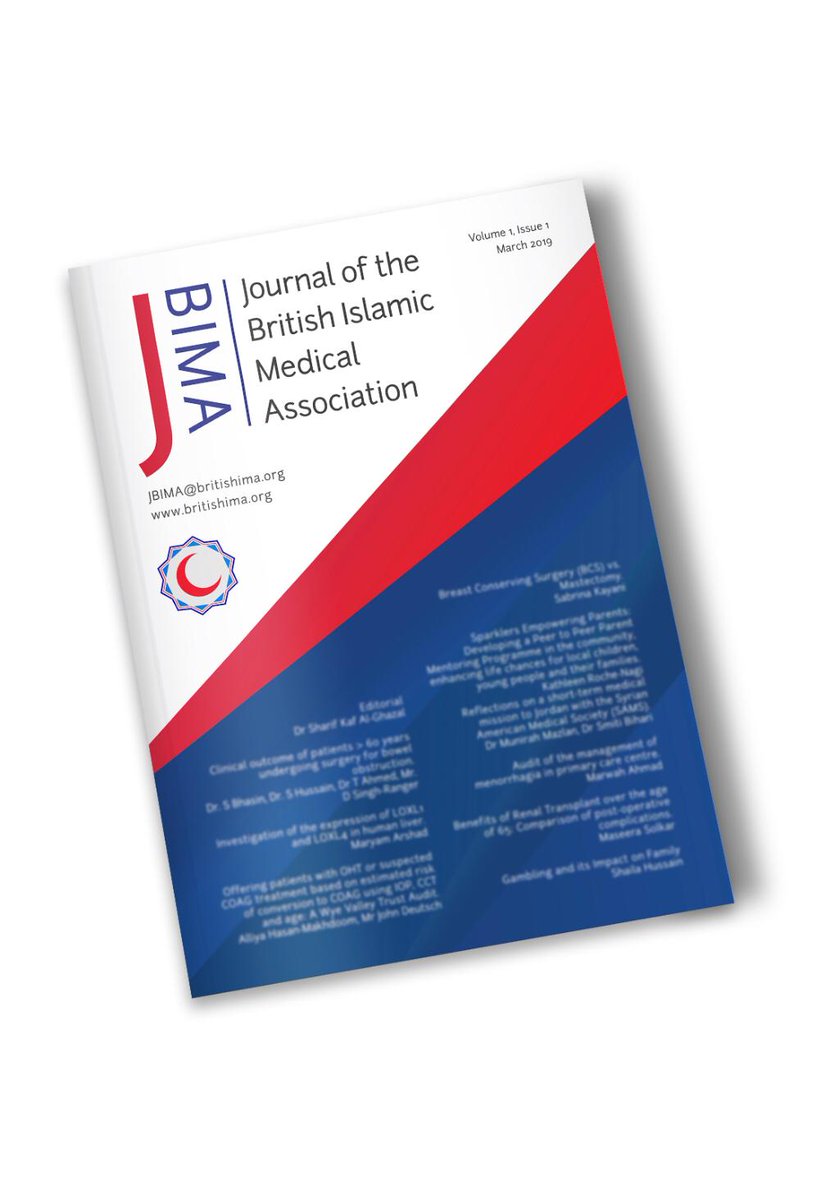
Introduction
It is known that there is little information out there on the role of women in Islamic medical history. According to some, they have not played any significant part in the development of this field. In this piece, we will prove that this assumption is not true and that the role of Muslim women in the field of healthcare is wide ranging as it is in some worldly and religious fields. We need to examine this issue in depth and it is unfortunate that most sources relating to this are published in Arabic which can make it difficult for non-Arabic speakers to learn about this.
The rise of Islamic Medicine
The practice of medicine has a special significance in Islam. The prophet PBUH used to instruct his companions on the importance of seeking treatment for ailments and diseases. Muslims would consider the study of medicine in the same light as he who studied religion.
Usamah ibn Sharik reported: A bedouin said, “O Messenger of Allah, shall we not seek treatment?” The Prophet said, “Yes, O servants of Allah, seek treatment. Verily, Allah did not place a disease but that he also placed its treatment or cure, except for one ailment.” They said, “O Messenger of Allah, what is it?” The Prophet said, “Old age.”
There is another hadith narrated by Abdullah Ibn Masud in which the Messenger of Allah said in another narration, the Prophet said, “One who has knowledge of it knows it, and one is ignorant of it is ignorant.” This means that the prophet PBUH has instructed us to seek treatment and search for the cure of a disease.
During the time of the Prophet PBUH, there were a few female Muslim physicians who contributed in the provision of healthcare.
Unfortunately, those who recorded history did not do their achievements justice and their accomplishments are not well known. The advancement of Medicine started by encouraging the translation of Greek texts to Arabic and later adding in their experiences during the Ummayid and Abbasid eras.
Hospitals and home visits
There is plenty of evidence to indicate that women practised in the field of Medicine in the early years of Islam and even afterwards. The tent of Rufaydah was considered perhaps the first mobile hospital for treating patients in Islamic history which will be explored in more detail later. It was known that Al-Zahrawi in Andalus depended on healthcare assistants who helped during his practice in obstetrics and female health (these would now be known as midwives). In later years, it was reported that the daughter of Shehabuldin Al-Saigh used to work in Al Mansouri hospital (the biggest hospital in Egypt at the time) and had a senior position there.
Besides the fact that female physicians worked in the hospitals, they also used to visit patients in their homes. Al-Tabbari, in his book “Tareekh al rusoolwa al mulook” stated that one male physician called Abo al-Hasan had a female patient come to see him with an infected wound in her shoulder and he responded by telling her “I am a kahal (an eye-physician) but we have a female physician who will be treating you”. She saw the female physician who treated her and Al-Tabbari viewed this hospital (Bimaristan) as a public health service. At the same time however, there was a lot to be said about the midwives who used to visit patients in their homes. This has been described by Ibn Al-Hajj in his book (Al-Madkhal) when he described the life of Muslim women in Cairo during the 13th and 14th centuries and how families used to arrange for midwives to come and perform deliveries and look after the new-born babies.
Specialties of female health providers
Amongst the specialties known at the time were looking after battled-wounded patients, providing minor surgery as well as complicated trauma surgery such as amputation. Providing “Kai” (cauterisation) and “hijama” (bloodletting) were also practised. Female physicians used to look after the wounds, stop the bleeding, change the dressing and provide handmade creams to provide wound healing (Fig 1).
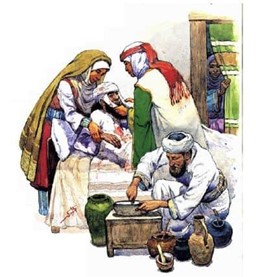
Figure 1Muslim Females actively participated in helping the injured from theearly years of Islam
Females were also involved in drug creation. And as mentioned above, in the book of Al-Tabbari it was stated that women helped treat infected wounds by making the right antiseptic creams. It is also well known that Zainab of Bani Oud specialised in treating eye diseases and in making topical medications. Al Shifaa bint Abdullah who used to treat skin ulcers by handmade topical creams, was also appointed as the head of Husbah (the body that would regulate different businesses in the Souk, including the composition of drugs). She was appointed by the second Caliph, Omar Ibn al-Khattab. (1).
As mentioned earlier, the references to Muslim female physicians are few and far between in English literature.
Some of these Muslim female physicians are:
1. Rufaydah Al Aslamiyyah: It was reported that Rufaydah embraced Islam in the prophet’s mosque in Madina after Hijrah and joined the Prophet (PBUH) in a few battles. She joined the army in the battle of Badr supporting the fighters and treating their wounds. Rufayda learnt most of her medical knowledge by assisting her father, Saad Al-Aslamy, who was a physician. Also in the battle of Al-Khandaq, she used to have a medical tent (very much like the military mobile hospital used in the modern era) with all the equipment needed to treat the injuries when she travelled with the army. She was the first in Islamic history to be in charge of a military mobile field medical centre. It was her medical tent.
She treated injured companions, as she did for Saad Ibn Muaaz at the request of the Prophet PBUH according to Hadith in Sahih Bukhari. She removed an arrow from his arm in her tent. (2)
She was also allowed to put her tent in the Prophet’s PBUH mosque in Madina where a few volunteer nurses used to help her in different shifts to look after Saad ibn Muaaz. She also trained some of the female companions about first aid and nursing before the battle of Khaibar. These female nurses used to help her in running her mobile medical military tent and having day and night shifts to look after wounded people. That shows also how the mosque during the Prophet’s PBUH time has been used as a medical centre. This story inspired many mosques to be used as Covid-19 medical, rehabilitation and vaccine centres as it has been recommended by some scholars (3,4).
Rufayda was given by the Prophet PBUH a share of the spoils of war (Ghana’em), similar to any fighter in the war, recognising her role in the battles. She also helped in treating many of the companions during peacetime as well as during wars. Rufaydah is depicted as a kind, empathetic nurse and a good organiser. With her clinical skills, she trained other women to be nurses and to work in the area of healthcare. She also worked as a social worker, helping to solve social problems associated with disease. In addition to this, she helped children in need and took care of orphans, the disabled and the poor (5, 6).
It was also mentioned that Rufaydah reported a few ahadith of the Prophet (PBUH) which were narrated by Al-Bukhari, Abu Dawood and Al-Nasa’ee. (7).
It is worth stating that many streets, schools and places are named after her, and the Royal College of Surgeons in Ireland, in conjunction with the University of Bahrain, grants an award named after Rufaydah to distinctive students every year (8).
2.Al-Shifaa (Laila bint Abduallah Al-Qurashiyah Al-Adawiyah- OmSulaiman) : Al-Shifa bint Abduallah al-Qurashiyah al-‘Adawiyah was one of the female companions who had a strong presence in early Muslim history as she was one of the wise women of that time. She was literate during a time of illiteracy. She was the first female teacher during the time of the Prophet (PBUH).
She was involved in public administration and skilled in medicine. Her real name was Laila, however due to her knowledge and skill in the practice of medicine, she was called Al-Shifa (the healing), so her name is partly derived from her profession as a nurse and medical practitioner.
Al-Shifa used to use a preventative treatment against ant bites and the Prophet PBUH approved of her method and requested her to train other Muslim women. She used to read and write well and used to teach Hafsah bint al-Khattab (the Prophet’s wife) writing, and trained her to treat the people with skin conditions, as she was famous for treating a dermatological condition with ulcers, similar to Eczema, with symptoms similar to having ant bites.
She was appointed by Omar Ibn al-Khattab (the second caliph) as a market inspector (Hosbah) in Madinah (first Muslim woman to hold such public office) (Fig 2).
This is similar to the position of Health & Safety Officer. (7,9)
Al-Shifaa also reported 12 Ahadith of the prophet (pbuh). She died in the year 641.
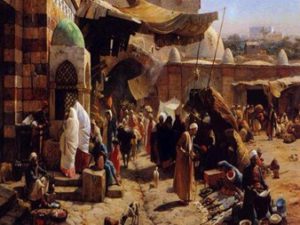
Figure 2 Al-Shifaa was one of the first females in Islam participating in Al-Husbah (regulating and monitoring the market)
3.Nusaybah bint Harith al-Ansari (Om Atiyyah Al-Ansariyyah): Nusaybah practised medicine before and after she embraced Islam. She was performing circumcision with the encouragement of the P rophet PBUH (9,10). Nusaybah had good relations with the P rophet’s PBUH wives and used to visit them regularly and share gifts with them. She reported some Ahadith of the P rophet (PBUH). She took care of the casualties on the battlefields and provided them with water, food and first aid. She joined the P rophet PBUH in 7 battles.
Nusaybah was the one who washed and prepared the body of Zainab (the Prophet’s PBUH daughter) following her death. It is also worth mentioning that she also reported over 40 ahadith of the Prophet (PBUH), some of them are narrated by Al-Bukhari and Muslim (7) . One of the Hadith was about the permission for women to attend the Eid prayers as narrated in Sahih Al-Bukhari. She later moved to Al-Basrah in Iraq where she died.
4. Nusaybah bintKa’ab al Maziniyyat (Om Omara): Nusaybah was one of the early females who embraced Islam. She attended with Mos’ab ibn Umair (as part of two females and seventy males) the agreement (Bay’at Al-Aqabah2) after she travelled from Madinah to Makkah to meet the p rophet (PBUH) before Hijra. She was the first woman to promise the Prophet PBUH to support him when he would immigrate to Madinah. She helped the injured people in the battle of Uhud and defended the Prophet (PBUH) during the fight; even he said that every time he used to look at his right or his left he would see her fighting to defend him, until she was injured in her neck (6,9).
She kept supporting and treating the wounded people after their war injuries. It was reported that she was a strong fighter and she joined the battle against Mosailimah (during the first caliph – Abu Bakr) and had her arm badly injured and amputated. She treated herself when she went back to Madinah.
5. Om Sinan Al-Islamiyyah: Om Sinan was one of the companions who asked permission of the Prophet (PBUH) to go out into the battlefield and assist the wounded soldiers and provide water to the thirsty.
She joined the Prophet PBUH in the battle of Khaibar, helping treat the wounded companions (11).
6. Om Warqah bint Abdullah ibn Al-Harith Al-Ansariyyah: Om Warqah helped to nurse the wounded people. She also participated in compiling the Qur’an and she made her house a little mosque after she took the permission of the Prophet PBUH. She was also known to be a living martyr as the Prophet PBUH used to call his companions: let’s go to visit the martyred woman, a s he told her that she will be killed and she was indeed killed by her servant during the time of Omar ibn Al-Khattab (6,12).
7. Al-Robee’e bint Mo’awaz: Al-Robee’e lived during the time of the P rophet PBUH. She was also one of the people who reported a few Ahadith of the Prophet PBUH, especially the one about the way he performed the wudu’e. She was one of the companions who attended Bay’at Al-Ridwan in the 6th year of Hijrah . Al-Robee’e helped in treating the injured companions. She died during the time of Mo’awiyah (year 665 CE) (13).
During the Prophet’s PBUH time, more female companions helped the injured fighters in the Muslim army by providing wound dressings, splints as well as herbs for pain relief. Some of them are (1,14,15):
8. Om Hakam Al-Makhzoomiyyah,
9. Om Musa ibn Nusair,
10. Safiyyah bint Al-Khattab.
11. Aisha (the prophet’s wife),
12. Om Ayman (Barakah bint Tha’alaba)
13. Om Salim (Anas ibn Malik’s mother)
14. Omayyah bint Qais Al-Ghafariyyah.
15. Layla Al-Ghafariyyah.
16. Mo’azah Al-Ghafariyyah.
17. Om Al-Ola Al-Ansariyyah.
18. Salma (Om Rafe’e): Salma used to serve and look after the P rophet PBUH and his house hold with her husband also. She helped Khadijah (the Prophet’s PBUH wife) during her delivery in Makkah.
19.Himnah bint Jahash (sister of Zainab – the wife of Prophet PBUH): Himnah participated in the battle of Uhud by bringing water to the thirsty, transporting the wounded to safety and providing necessary treatment (13).
20. Zaynab bint Ali: Zaynab was the granddaughter of the Prophet (PBUH). She is known for her bravery and her skills on the battlefield, nursing wounds. In Iran, admirers celebrate Nurse’s Day every year, commemorating the contributions of Zaynab. Historically, Zaynab accompanied her brother Husain to Kufah, where he challenged the Umayyad Caliph and was defeated in the Battle of Karbalaa in 680. She was captured at the Battle of Karbalaa and when standing before Yazid and his son Mu’awiyah, she gave such a passionate speech that he ordered her and the other prisoners to be released.
During the Umayyad time there were a few female physicians:
21. Zainab from baniAwd, who was famous for treating eye conditions as well as surgery. Abo Al-Faraj Al-Asfahani in his book (Al-Aghani) also mentioned her in a nice poem:
أمخترمي ريب المنون ولم أزر … طبيب بني أود على النأي زينبا
22. Faridah Al-Kubra, she moved from Al-Hijaz to Syria.
23. Kharqa’a Al-Amiriyyah, she lived and practised in Al-Hijaz.
24. Salamah Al-Qiss, she moved from Al-Hijaz to live in Syria during the Umayyad time.
25. Hobabah: she lived and practised in Al-Basrah, Iraq (died in year 723 CE).
And during the Abbasid time there were a few female physicians (1):
26. Motayam Al-Hamishiyyah, who practised in the ninth century and died in year 838 CE.
27. Rohass, she lived in Baghdad and died in year 859.
28.Mahbobah, Abbasid Caliphate, Iraq, (died in year 861 CE).
29. Om Asyah (midwife) who lived in Egypt during the Toloniyah State.
During the Muslim ruling in Andalus (modern Spain) there were a few women who worked in Medicine (16,17,18):
30. The sister of Al-Hafid ibn Zohr (the grandson of Ibn Zohr – Avenzoar) and his two daughters who used to practise obstetrics and midwifery as well as treating the sick children (both of them were the private physicians of the wife of the ruler Al-Mansoor in Al- Andalus). There were a few physicians in the family of Ibn Zohr over five generations in Al-Andalus (Ishbilya – Seville).
31. The daughters of Al-Zahrawi were known to practise medicine after being taught by their father. Al-Zahrawi has written an encyclopaedia in Medicine called Al-Tasrif (19)and he allocated 10 chapters to discuss midwifery and obstetrics in great details in the 30th volume, which was about Surgery.
32. Om Al-Hasan bint Al-Qadi Al-Tanjaly: who lived in Al-Andalus in the 14th century, and was famous in practising as well as in teaching medicine. She was not keen on writing books as she mentioned in her poem about that. She was also a scholar and taught Tajweed of the Quran.
In Damascus (Syria) there were:
33. Bint Dohn Al-Louz (also known as Dohn Al-Louz): she was a very skilful woman practising medicine who was also one of the Islamic scholars in Damascus. She died in 1216 (9).
In Egypt in the 17th century:
34. Bint Shihab Al-deen ibn Al-Sa’egh: she practised medicine after she took over after her father died in 1627. She became the chief of physicians in Al-Mansouri Bimarstan in Cairo (Egypt) (9). The function of that position also covered the regulating medical body in the biggest hospital in the country in that time.
35. Women surgeons in 15th-century Turkey:
Between those first names of early Islamic history other women practiced medicine and nursery. Few of them were recorded. However, a serious investigation in the books of the history of medicine and writings from the time will certainly provide precise data about their lives and achievements. In the 15th century, a Turkish surgeon, Serefeddin Sabuncuoglu (1385-1468), author of the famous manual of surgery, Cerrahiyyetu’l-Haniyye, did not hesitate to illustrate the details of obstetric and gynaecologic procedures or to depict women treating and performing procedures on female patients. He also worked with female surgeons, while his male colleagues in the West reported against the female healers (Fig 3).
Female surgeons in Anatolia generally performed some gynaecological procedures, like surgical management of fleshy growth of the clitoris , imperforated female pudenda, warts and red pustules arising in the female pudenda, perforations and eruptions of the uterus, abnormal labours, and extractions of the abnormal foetus or placenta. Interestingly, in the Cerrahiyyetu’l-Haniyye, we find illustrations in the form of miniatures indicating female surgeons. It can therefore be speculated that they reflect the early recognition (15th century) of female surgeons treating paediatric neurosurgical diseases like foetal hydrocephalus and macrocephalus (20). The attitude towards women in the history of medicine reflects the general view that society held of women during the period. It is interesting that in the treatise of Serefeddin Sabuncuoglu, we find an open minded view of women, including female practitioners in the complex field of surgery (20).
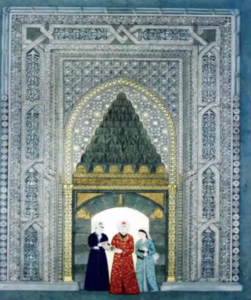
Figure 3: The main gate of Dar Al-Shifaa showing Serefeddin (Sharaf Al-Din) Sabuncuoglu the chief physician of Dar Al-Shifaa with his two female students
36. Fatima al-Fihriyya in Morocco: Fatima al-Fehriyya has played a great role in the civilisation and culture of her community. She migrated with her father Mohamed al-Fihri from Qayrawan, Tunisia, and travelled to Fez in Morocco. She grew up with her sister in an educated family and learnt Fiqh and Hadith. Fatima inherited a considerable amount of money from her father which she used to build a mosque for her community. Established in the year 859 CE, the Qarawiyyin mosque later functioned as a university and was considered the oldest, and possibly the first, university in the world (21). Students travelled from all over the world to study there (Fig 4,5).
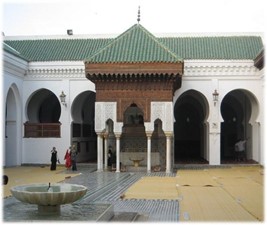
Figure 4:Fatima Al-Fahriyya established the first university in the world in Fez (Morocco) year 859
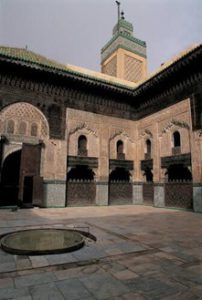
Figure 5 Al-Qarawiyyin University, the first university in the world in Fez (Morocco) – established in year 859
Conclusion:
It has been accepted that only male physicians were practicing medicine during the Greek era and after Hippocrates, so not a great deal of female physicians were documented (22).
The Muslim female health providers during the early stage of Islam, who participated in different aspects of medicine, are unfortunately underreported. Ibn Abi Usaibi’aa mentioned only one female physician in his book.
Muslim women have had a great impact in the scientific field and more research is needed to understand their contributions. Muslim women not only used to attend lectures (Fig.6) but also contributed to teaching their male fellows (Fig.7). A reason for the lack of reporting of their work is that unfortunately, there is little that has been written about them; and that which has been written is mainly in Arabic. Unlike their male counterparts, they did not write books or articles. Interestingly, one of the well-respected female Muslim physicians, Om Al-Hasan bint Al-Qadi Al-Tanjaly who lived in Al-Andalus, was not keen on writing about her experience in books and she mentioned a poem in Arabic which made reference to the fact that “writers write, and doers do”
Hence she was so busy working she would have no time to write!
It is worth remembering that the first registered female physician in England was Elizabeth Blackwell in 1858, after coming from the US where she had qualified in 1849.
It is therefore clear that there is a rich history of female Muslim physicians in Islam, one that unlike those in the West, goes back centuries. Much can be learned from their findings, but more scholarship is needed to understand and appreciate their contributions.
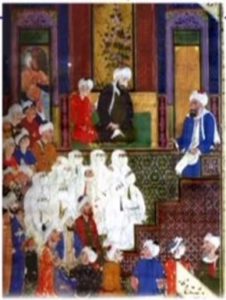
Figure 6: Women attending a lecture and sitting in the first row
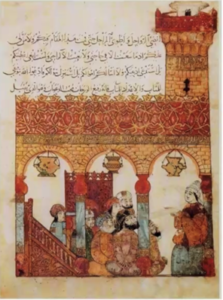
Figure 7: A woman is teaching men at a mosque
References:
1. Al-Nisa’aWaMihnat Al-Tib Fi Al-Mojtama’at Al-Islamiyyah, by Omaymah Abu Bakr & Huda Al-Sa’di , Cairo (Egypt) 1999.
2. Omar Kasule, “Historical Roots of the Nursing Profession in Islam,” https://www.nursingworldnigeria.com/2015/02/historical-roots-of-the-nursing-profession-in-islam (Accessed on 15 Dec 2020).
3. Muslim scholars are giving Fatwa towards allowing mosques to be used foe Covid patients rehabilitation
https://mubasher.aljazeera.net/news/politics/2020/4/11/%D8%B9%D9%84%D9%85%D8%A7%D8%A1-%D8%A7%D9%84%D9%85%D8%B3%D9%84%D9%85%D9%8A%D9%86-%D9%8A%D8%B5%D8%AF%D8%B1-%D9%81%D8%AA%D9%88%D9%89-%D8%A8%D8%B9%D9%84%D8%A7%D8%AC-%D9%85%D8%B5%D8%A7%D8%A8%D9%8A
(Accessed on 25.1.2021).
4. Birmingham mosque becomes UK’s first to offer Covid vaccine
https://www.bbc.co.uk/news/uk-england-birmingham-55752056 (Accessed on 25.1.2021).
5. R. Jan, “Rufaida Al-Asalmiy, The first Muslim nurse”, The Journal of Nursing Scholarship, 1996 28(3), 267-268;
6. Great women in Islamic History: a forgotten legacy
https://funci.org/great-women-in-islamic-history-a-forgotten-legacy/?lang=en (Accessed on 21.12.2020)
7. The Top Hundred of Female Companions during the Prophet Time. By Mahmoud T Halabi (punlished in Beirut , Lebanon 2004). (in Arabic).
8. https://en.m.wikipedia.org/wiki/Rufaida_Al-Aslamia (Accessed on 21.12.2020).
9. Al-Tib waRa’idatoho Al-Muslimat , by Abdallah Al-Sa’eed, published in Amman, Jordon 1985 (in Arabic)
10. Abdel-Hamid ‘Abd Rahman Al-Sahibani, Suwar min Siyar al-Sahābiyāt, Riyadh: Dar Ibn Khazima, 1414 H, p. 211; ‘Umar Kahala, A’lam al-nisa’, Damascus, 1959, vol. 5, p. 171.
11. http://www.sahaba.rasoolona.com/Sahaby/26756/تصح-مفصل/أم-سنان-الأسلمية accessed 20.1.2021
12. Great women of Islam, By Ghandafar (translated by J M Qawi) http://www.islamicstudies.info/history/companions/Great_Women_of_Islam.pdf (Accessed 21.12.2020)
13. https://www.peacepalacelibrary.nl/ebooks/files/turabi.pdf On the Position of Women in Islam and in Islamic Society. Accessed 15.12.2020
14. SahabiyatHawla Al-Rasoul, by Mahmoud Al-Masri (Egypt 2005). (in Arabic)
15. The top hundred of female companions during the prophet time. By Mahmoud T Halabi (punlished in Beirut , Lebanon 2004). (in Arabic).
16. Aalam al-Nisa’a fi Alamai Al-arabwalIslam , by Omar RidaKahalaih (part 1 –page 259) . (in Arabic)
17. The History of Medicine and Its Ethics , by Ahmad Shawkat Al-Shatti, 1960 Damascus. (in Arabic)
18. Uyun Al-Anba’a fi tabaqat Al-Atibba’a , Ibn Abi Usaiba’a. 13th century (in Arabic).
19. Al Zahrawi . Manuscript of Al-Tasrif copied by Abu Al-HasanatQutb al-Din Ahmad (year 1908).URL: https://dl.wdl.org/7478/service/7478.pdf (Accessed on 7.7.2020)
20. https://muslimheritage.com/womens-contribution-to-classical-islamic-civilisation-science-medicine-and-politics/ (Accessed on 7.7.2020)
21.https://whc.unesco.org/en/list/170/#:~:text=Video-,Medina%20of%20Fez,the%20capital%20of%20the%20kingdom (Accessed on 2.12.2020)
22. https://www.marefa.org/%D8%A3%D8%A8%D9%82%D8%B1%D8%A7%D8%B7
(Accessed on 15.3.2021)

